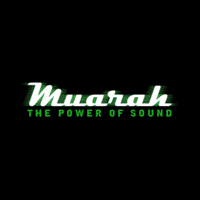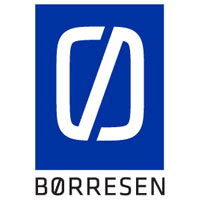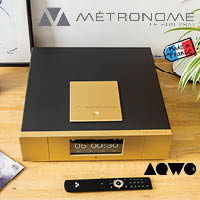Icon Audio LA4 MKIII Signature Preamplifier
After 22 years in business, Icon Audio (based in Leicester, UK) is designer/owner David Shaw‘s tube passion project—tubes are called “valves” in the UK. Undeterred by pandemic and supply chain problems, both of which have been very severe in England, Shaw has soldiered on and is back shipping a plethora of his highly regarded components. At Audiophilia, we have reviewed three Icon Audio products, all very favourably.
We’ve been aided in these reviews by Icon’s distributor, the indefatigable Warren Lavender of Audioarcan. Thank you, once again, Warren for shipping to the island.
As always, the shipping box is well-protected and arrived intact. Have a look at our unboxing here.
The piece under review is the Icon Audio LA4 MKIII Signature Preamplifier. The “David Shaw Signature Edition” is a line preamp that adds the David Shaw white ceramic base premium CV 181 (6SN7) tubes and Mundorf silver/gold capacitors. The price for the signature edition is $3295. The standard edition comes in at $2700. Audioarcan can upgrade your standard version to the signature edition at any time with in-house kits.
My Use
The unit is not too heavy but best to have a friend around just in case during unboxing and setup. Tube boxes are marked with the corresponding slots on the unit. In no time at all, you’ll have the LA4 powered up.
I was in the middle of an Ansuz Acoustics C2 cable review, so the LA4 had the best connections. These expensive Danish cables are marvels and work with all types and levels of gear. But I’m guessing the purchaser of the LA4 probably won’t be attaching Є30,000 worth of high-end cables.
The LA4 was powered by the amplifier section of my MBL N51 Integrated Amplifier, with the Aavik D-280 DAC and S-280 Streamer (reviews of both forthcoming). Also in the mix were my Phasemation EA-350 Phono Amplifier and my Bergmann deck.
I did not try any other tubes. I’m not a tube “roller”. It’s been my experience that David Shaw's “Signature'“ versions use his very fine upgraded tubes.
The review of the LA4 was going to be under super optimal conditions. No excuses or weak links.
The tube complement for the LA4 is 3x 6SN7 valves (CV181) and 1x GZ34 Valve rectifier (also 5AR4/274B). There are adaptors available for 12AU7/ECC82
Hallelujah, a small, very solid metal remote. The important functions included, a good size and it feels good in the hand—all you need. If you’re a long-time Audiophilia reader, you’ll know of my feelings about very fine high-end audio companies shipping a five-figure design with a POS plastic lump or an Apple remote. David Shaw of Icon does it right. Classy all the way. And with a $3295 component.
The LA4 uses an ALPs motorized volume pot.
Features & Specs
The LA4 has a solid alloy and steel chassis with point-to-point internal wiring. Shaw says “this is essential for valve amplifiers, and allows for upgrading to larger capacitors, and makes future servicing very simple.”.
The MKIII is an all-triode design. Dimensions are 25cmW, 37D, 23H (with 274B and cover), or 17H with GZ34 (no cover). Weight is 12kg packed.
Double Choke HT supply
DC heater supply
Signal to noise level -90db
Freq response 20hz-20khz +0 - 0.1db
Total harmonic distortion typically less than 0.1%
Gain x4, 12db
Max input level 5v for 20v output#
Very low output impedance of 100Ω
Suitable for power amps 100mv-5v sensitivity
High quality 2w metal film, & wire-wound resistors
Silver PTFE audio cable
Gold plated Input terminals
Four line inputs plus optional Bluetooth (The Bluetooth option is being offered by Icon Audio on limited models that include the headphone amplifiers, Stereo 25 integrated and the LA4 preamp. The Bluetooth addition will support wireless Bluetooth input devices. Unfortunately, this option is only available with factory orders and cannot be installed on current models in the field).
Tape monitor circuit and record output
Optional valve cover available (unused)
230/117volts 100watts
Shaw’s simple, elegant triode, single-stage design adds a quality, very effective power supply. The LA4 MKIII uses “a large choke in Pi configuration for well conditioned power giving superb smoothing for velvety inky black silence.” I can attest to the inky silence.
The tubes used are the 6SN7 double triodes. Shaw says “This 1940 vintage valve has all the best characteristics for the job, and its larger size means long life and good stability. Also the sound is more musical as we feel these have a more fluid sound. You can experiment with both vintage and modern types.”
LA4 MKIII rear panel.
Audiophilia’s Michael Johnson, who purchased his Icon Audio HP8 MkII Signature Headphone Amplifier review unit, adds some interesting information regarding the LA4’s adaptability:
Often one excluded feature of modern high end preamps and integrated amps is some type of "fixed" rca output. This feature, often referred to as a "tape out", in reference to the connection once needed to record needledrops to cassette tape, allows the listener to connect the external headphone amplifier of their choice. Some preamps do in fact include a capable headphone amplifier in their design, but for most it is an afterthought, or excluded altogether. While everyone would like to listen to their speakers all the time, real life often necessitates the occasion for headphones, and many people (myself included) have invested significant expense in standalone unit. Because of this, I find myself often eliminating from consideration many fine preamps that would render my headphone amp unusable in my primary system.
Thanks, MJ.
Sound
The LA4 impressed me right out of the box. A few minutes warm-up offered some tubey, triodey goodness. Meaning it fleshed out instruments and voices beautifully as the best triode designs do and each tessitura was in its correct vertical place yet produced a wonderful blend full of detail and life. I broke in the unit for a solid week with a CD on repeat. Sure, I had a look a couple of times, but a week on the tubes and circuit will offer nothing but improved goodness.
The unit fits beautifully into a rack—just leave some room at the top for airflow over the tubes. And it is certainly a looker!
Lit for a video shoot in my kitchen. The Icon signature copper top plate always looks amazing.
After a week, the LA4’s sonic signature offered many tells. Shaw’s superior triode circuit and tube selection meant the unit played with ultra musicality, warmth and with excellent information retrieval. And that “inky’ background! A very easy recommendation for those with a tube predilection and 5K burning in your pocket. So, a bargain at $3295!
I’m always looking for a “full function” preamplifier—the conductor of my system. Although line-only inputs, millennials can get a Bluetooth option (but, why?) and the remote is functional. Even though a sophisticated design with tubes, the LA4 is about as plug-and-play as the tube world allows.
My mission was not comparative, although it can be an important part of a review. My world has seen 15 to 30K tube preamps as long-term references and my beloved $17,400 solid-state MBL. Simply, not fair. The examples I’ve had in-house are world beaters with a couple reducing me to a wet blanket on the first hearing—amazingly good. The state of the art in both tube design (Allnic) and solid-state (MBL).
A $3295 design is not manufactured to compete with that sort of firepower. The Icon Audio purchaser will be earlier on in their curation journey. As such, thank God for designers like David Shaw; audiophiles have options for very fine high-end sound for considerably less investment. That said, the LA4 impressed me so much, I could imagine it playing happily in most sub-10K tube preamp gardens.
Along with this review, pushed forward in the publication schedule, is the review of Allnic’s “inexpensive” L-6500 entry-level tube preamplifier. It’s a completely different design and more than twice the price of the Icon. Yet here, the two companies were far more evenly matched. And as I listened to both, the Icon’s price and value kept projecting the unit way up in the price/sound ratio stakes.
So, a looker and a player. Why?
Recently, I’ve been using Analogue Recordings’ superb LP reissue of Stravinsky’s 1917 orchestral classic Le Chant du Rossignol for all sorts of reviews and plain enjoyment and learning. It’s a corker of a piece and recording in the hands of RCA, Chicago and Reiner. The dynamics are huge and now heard with far more realism than on original playback in the studio. I was using the MBL fully integrated for the C2 cable review. Yet, when I heard the Stravinsky with the L4A in the system, it surprised and delighted me. I immediately sent a note to our team to be on the lookout for this very fine preamplifier.
The tubes/triode offered sensual timbres with the great Chicago players sounding their very best.
Only at extremely loud levels did I feels a sense of limited dynamic headroom and a slight loss of orchestral coherence in comparison with the very best. But the LA4 likes to play loud and proud and unless driven to a fault, the triode sound remains intact. And beautiful it is. So, all the Chicago players had accurate and beautiful sounds.
The same for streaming. I have lots to say about streaming quality in upcoming reviews. But, when streaming thickly scored Brahms symphonies or the astringent scoring on Steely Dan’s Gaucho, the LA4 did the music proud. If system basics are in place in your well-balanced system and appropriately sized room, you won’t be wanting for more. There is an admirable separation of instruments, even on 1960s CD-quality classical recordings. Voices sound very beautiful—Elizabeth Schwarzkopf singing Strauss songs, for example. Because of the LA4’s clarity, the orchestral accompaniment was laid out perfectly with Schwarzkopf’s soaring soprano above the orchestra, her exquisite voice intact and more importantly, in place, even at a loud volume.
Summary
Imaging on my reference monitor speakers and the very fine Acelec Model Ones in for review was excellent. And the soundstage with lovely instrumental and vocal timbres makes the unit a long-term winner and a steal at $3295. Still too rich for your budget? Get the standard $2700 model and upgrade when funds allow. Very highly recommended.
Further information: Icon Audio































